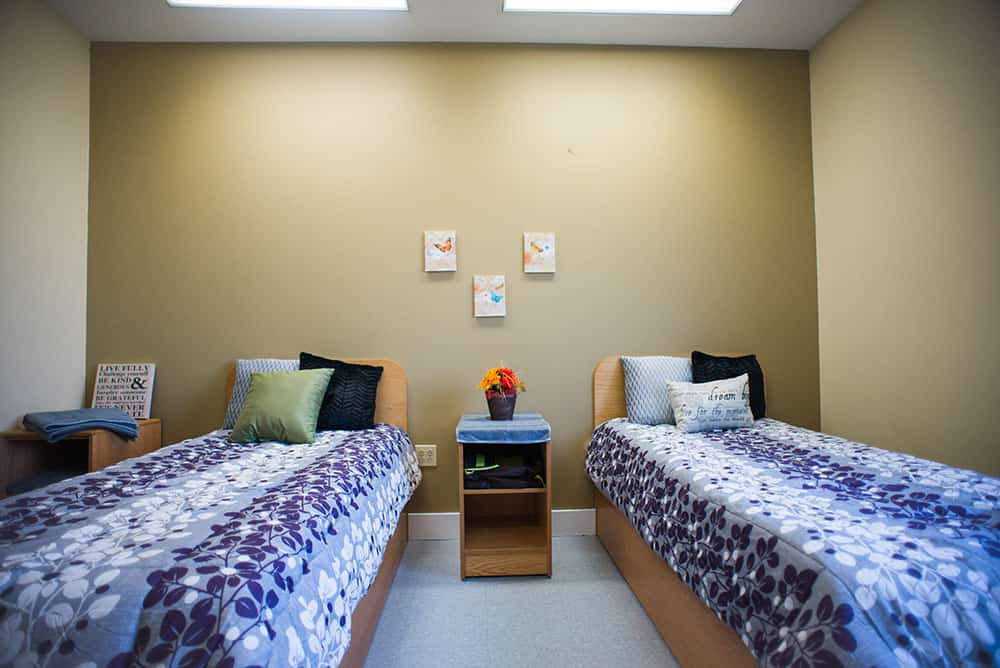Understanding the signs, symptoms, causes and effects of bipolar disorder is an important first step toward healing and recovery.
Understanding Bipolar Disorder
Learn about bipolar disorder
Bipolar disorder is a mental illness that causes an individual to experience severe shifts in mood, energy, thinking, and behavior. Individuals with this disorder may feel the highs of mania one minute, and feel extremely depressed the next. The moods experienced with bipolar disorder are more than just a few bad moments— they are cycles that last anywhere from days to months. Additionally, these changes in mood are so severe that they interfere with an individual’s ability to function on a daily basis.
During a manic episode, individuals may feel like they are on top of the world and that they are able to do anything. They have heightened levels of energy, creativity, and euphoria. In this state individuals may engage in reckless behavior such as quitting their job or racking up huge credit card bills. On the other hand, during a major depressive episode those same individuals may feel completely hopeless or even feel unable to get out of bed because their emotions are so low. In addition to manic and depressive episodes, an individual with bipolar disorder may experience mixed episodes. These mixed episodes involve symptoms of both mania or hypomania, and depression. This combination of high energy and depressed mood makes for a high risk of suicide.
Bipolar disorder exists in three different, but related, forms. These forms vary in the level of depression or mania, the length of the episodes, and the amount of mood shifts experienced. Bipolar I disorder is characterized by at least one manic episode or mixed episode. Individuals with this form of bipolar usually, but not always, experience at least one episode of depression. Bipolar II disorder is characterized by hypomanic episodes and depressive episodes. Hypomania is a less severe form of mania where the individual doesn’t experience symptoms severe enough to be labeled full blown mania. Finally, cyclothymia is a milder form of bipolar disorder in which the cycle of moods never reaches full blown manic or depressive episodes.
Usually the first manic or depressive episode occurs in later teenage years or early adulthood. Initially symptoms may not be as pervasive and are confusing, causing them to be overlooked or undiagnosed. If left untreated, the disorder tends to worsen over time with the cycles becoming more frequent and severe. While this disorder cannot be cured, with the proper treatment and support individuals with bipolar disorder can learn to live happy and productive lives.
Statistics
Bipolar disorder statistics
According to the American Psychiatric Association (APA), approximately 0.6% of Americans are afflicted with bipolar I disorder. This disorder impacts men a bit more than it does women, with a ratio of 1.1 men for every one woman who is diagnosed with this condition.
Many individuals are able to recover from bipolar I when the appropriate treatment is supplied and enough time and support are provided to obtain proper coping skills. However, nearly 30% of individuals with bipolar I have serious impairment in work functioning.
Unfortunately, the risk of suicide in those who have bipolar I disorder is 15 times greater than that of the general population.
Causes and Risk Factors
Causes and risk factors for bipolar disorder
The exact causes of bipolar disorder aren’t know, but it is thought that bipolar disorder is the result of a number of factors working together. These factors include:
Genetic: Research has determined that bipolar disorder tends to runs in families, so if you have blood relatives living with this disorder, you are more likely to develop it yourself. Researchers are trying to find genes that may be involved in causing this disorder.
Brain Structure: There are physical differences in the brain scans of individuals who have bipolar disorder and those who do not. While the significance of these changes in brain structure is still unknown, scientists are hoping that these notable differences will lead to the ability to determine a cause of this disorder.
Brain chemistry: It has been shown that there is a natural imbalance of neurotransmitters in the brain of those with bipolar disorder. Additionally, imbalanced levels of hormones may be involved in causing the development of this disorder.
Environmental: Certain environmental stressors, such as abuse, significant loss, or experiencing a traumatic event may be involved in bipolar disorder.
Signs and Symptoms
Signs and symptoms of bipolar disorder
This disorder can look different in each individual, with the symptoms varying widely in pattern, severity, and frequency. Some individuals are prone to experiencing either mania or depression, while others alter between the two episodes. Symptoms will also vary depending on the type of mood episode. The following are symptoms experienced during a manic phase or depressive phase.
Mania/Hypomania Symptoms (less severe form of mania):
- Speaking loudly
- Feeling optimistic
- Extremely irritable
- Feeling unusually high
- Behaving jumpy or wired
- Easily distracted
- Taking on new projects
- Restlessness
- Unrealistic beliefs about one’s ability
- Acting impulsively
- Overly happy, outgoing mood
- Increased energy
- Sleeping less
- Inflated self-image
- Increased libido
- Risky sexual behaviors
- Jumping from one topic to another
- Rapid, pressured speech
- Speech and thought flying from one thing to the next
- Extreme spending
- Delusions and hallucinations in severe cases
Depressive Symptoms:
- Feeling hopeless
- Sadness
- Feeling empty
- Changes in appetite and weight
- Sleeping problems
- Irritability
- Inability to experience pleasure
- Physical and mental sluggishness
- Fatigue or loss of energy
- Concentration or memory problems
- Feeling worthless
- Feelings of guilt
- Thoughts of death or suicide
Effects
Effects of bipolar disorder
When left untreated, the effects of bipolar disorder can affect every facet of your life. Some of the most common effects experienced by those with untreated bipolar disorder may include the following:
- Alcohol and substance abuse problems
- Legal issues
- Relationship problems
- Financial difficulties
- Social isolation and loneliness
- Poor work or school performance
- Suicide
Co-Occurring Disorders
Bipolar disorder and co-occurring disorders
Bipolar disorder often occurs with other mental health conditions. Common co-occurring disorders include:
- Substance abuse
- Alcoholism
- Anxiety disorders
- ADHD
- Conduct disorders
- Disruptive disorders
- Metabolic syndrome
- Migraine headaches










